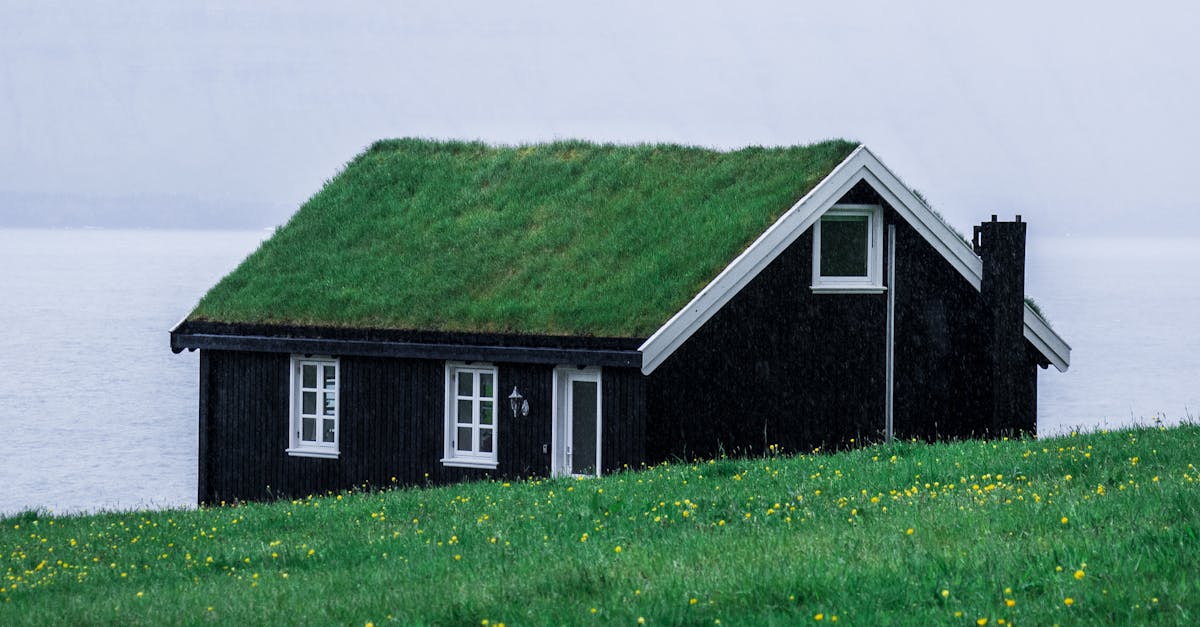
d seam sealing techniques. This will help prevent any water infiltration and ensure the integrity of the waterproofing system over time. Lastly, regular inspections and maintenance should be conducted to address any potential issues early on and prolong the lifespan of the vegetated roof.
Proper Drainage Design
Proper drainage design is crucial for the long-term success of vegetated roofs in Australia. In this unique climate, where heavy rainfall and intense sunlight are common, ensuring effective water management on vegetated roofs is essential. Without proper drainage, water accumulation can lead to structural damage, plant stress, and ultimately, the failure of the waterproofing system.
The design of a vegetated roof's drainage system should consider factors such as roof slope, type of vegetation, and local rainfall patterns. Installing a combination of drainage layers, including root barriers, drainage mats, and filter fabrics, can help regulate water flow and prevent waterlogging. Additionally, incorporating overflow outlets and regular maintenance checks can further enhance the efficiency of the drainage system, ensuring the longevity and functionality of the vegetated roof.
CostEffective Waterproofing Solutions for Australian Climate
When it comes to choosing waterproofing solutions for vegetated roofs in Australia, finding a balance between quality and budget is crucial. The harsh Australian climate, with its extreme heat and occasional heavy rainfall, necessitates durable and reliable waterproofing membranes that can withstand varying weather conditions. However, it is also important to consider cost-effective options that provide long-term protection without breaking the bank.
One cost-effective solution for Australian vegetated roofs is to opt for high-quality synthetic membranes that offer excellent waterproofing abilities at a reasonable price. These membranes are designed to resist UV radiation, heat, and moisture, making them ideal for the Australian climate. Additionally, conducting regular maintenance and inspections can help prolong the lifespan of the waterproofing system, reducing the need for costly repairs or replacements in the future. By investing in quality waterproofing solutions that are tailored to the unique demands of the Australian environment, building owners can ensure the longevity and integrity of their vegetated roofs.
Balancing Quality and Budget
When it comes to waterproofing solutions for vegetated roofs in Australia, finding a balance between quality and budget is crucial. While it’s tempting to opt for the cheapest option available, sacrificing quality can lead to long-term issues that may end up costing more to rectify in the future. It’s essential to carefully consider the quality of materials and workmanship to ensure that the waterproofing membranes perform effectively over the lifespan of the roof.
One approach to balancing quality and budget is to seek out cost-effective waterproofing solutions that are specifically designed to withstand the Australian climate. By investing in high-quality membranes that are tailored to the unique challenges of the local environment, you can ensure that your vegetated roof remains watertight and durable. Additionally, working with experienced contractors who understand the intricacies of waterproofing vegetated roofs can help you achieve a balance between quality and budget without compromising on the integrity of your waterproofing system.
Impact of Waterproofing on Energy Efficiency of Buildings with Vegetated Roofs
FAQS
What are the best practices for installing waterproofing membranes on vegetated roofs?
The best practices for installing waterproofing membranes on vegetated roofs include proper surface preparation, ensuring seams are securely sealed, and using materials specifically designed for vegetated roof applications.
How important is proper drainage design for vegetated roofs in Australia?
Proper drainage design is crucial for vegetated roofs in Australia to prevent water pooling, promote healthy plant growth, and protect the structural integrity of the building.
What are some cost-effective waterproofing solutions suitable for the Australian climate?
Some cost-effective waterproofing solutions suitable for the Australian climate include synthetic rubber membranes, modified bitumen membranes, and liquid-applied membranes.
How can one balance quality and budget when selecting waterproofing solutions for vegetated roofs?
Balancing quality and budget when selecting waterproofing solutions for vegetated roofs involves considering factors such as material durability, installation costs, and long-term maintenance requirements.
What is the impact of waterproofing on the energy efficiency of buildings with vegetated roofs?
Waterproofing plays a significant role in the energy efficiency of buildings with vegetated roofs by helping to maintain temperature control, reduce heating and cooling costs, and improve overall building performance.
Related Links
Economic and Environmental Benefits of Vegetated Roofs